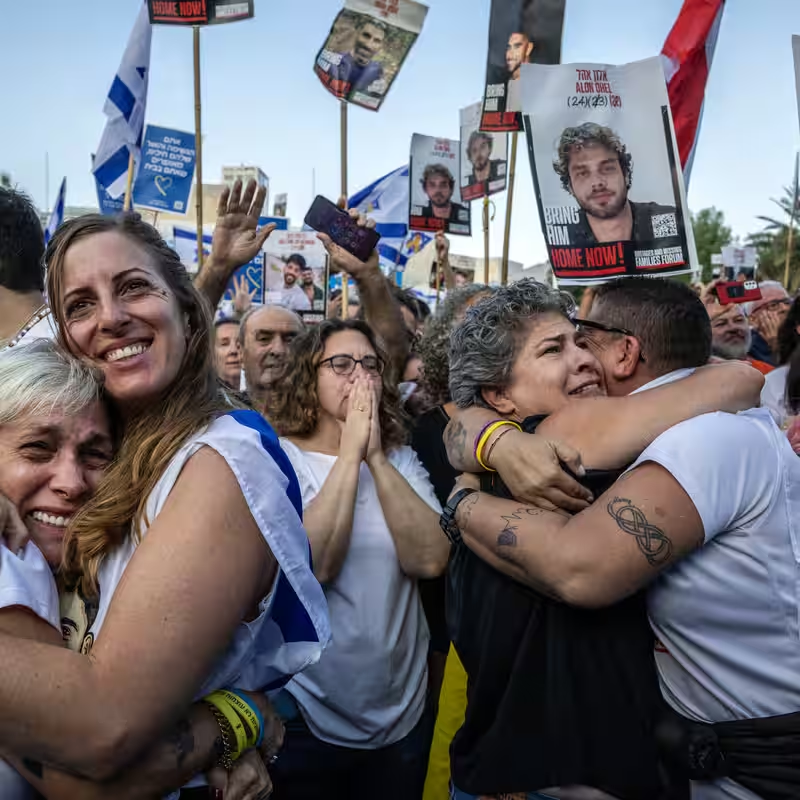Table of Contents
- Hostage Release Marks Historic Ceasefire Milestone
- Nearly 2,000 Palestinian Prisoners Return Home
- Emotional Reunions Across Borders
- The Red Cross and Logistics of the Swap
- What Comes Next for Gaza and Regional Peace?
- Sources
Hostage Release Marks Historic Ceasefire Milestone
In a landmark moment for Middle East diplomacy, Hamas released the last 20 living Israeli hostages from Gaza on Monday, October 13, 2025. The move was the centerpiece of a fragile ceasefire deal brokered with U.S. and regional mediation, ending more than 700 days of captivity for those seized during the October 7, 2023 attacks.
The hostage release unfolded in two phases under the watchful eyes of International Committee of the Red Cross (ICRC) convoys and armed Hamas militants near Deir al-Balah. Families in Israel, many of whom had camped for months in Tel Aviv’s “Hostages Square,” erupted in tears and cheers as live footage showed their loved ones boarding helicopters bound for Israeli hospitals.
Nearly 2,000 Palestinian Prisoners Return Home
In exchange, Israel fulfilled its commitment by releasing 1,968 Palestinian prisoners to the West Bank, East Jerusalem, and Gaza. Buses rolled into cities like Ramallah and Khan Younis, where crowds waved keffiyehs and chanted slogans of victory.
Among those freed were long-term detainees serving multiple life sentences, as well as minors and elderly inmates. The Palestinian Red Crescent reported that several required immediate medical attention upon release, highlighting the physical and psychological toll of prolonged incarceration.
Emotional Reunions Across Borders
The human stories behind the numbers are where the ceasefire truly came alive:
- Alon Ohel, 24, a pianist abducted while fleeing the Nova music festival, was greeted by friends in Tel Aviv shouting, “Alon Ohel, come here!” as they watched his release on TV.
- Matan Zangauker’s mother, Einav, broke down during a pre-release video call: “There’s no war; it’s over. You are coming home!”
- In Ramallah, mothers wept as sons they hadn’t seen in over a decade stepped off buses—though some families left heartbroken when their relatives weren’t among those freed.
The Red Cross and Logistics of the Swap
The ICRC played a pivotal role in coordinating the complex logistics. Red Cross convoys transported hostages through southern Gaza under Hamas escort before handing them over to Israeli forces at designated checkpoints. Simultaneously, Israeli prison authorities coordinated the release of Palestinian detainees in batches throughout the day.
Despite its neutrality, the Red Cross has faced criticism from both sides—Israelis accusing it of opacity, Palestinians of insufficient advocacy. Yet Monday’s operation showcased its irreplaceable function in conflict zones.
What Comes Next for Gaza and Regional Peace?
While the hostage release and prisoner swap offer a glimmer of hope, major obstacles remain. Israel insists Hamas must fully disarm and relinquish governance of Gaza—a demand Hamas has not accepted. Meanwhile, reconstruction in Gaza is stalled, with 60 bodies still being pulled from rubble daily, according to Gaza’s Health Ministry.
World leaders, including President Trump and Egypt’s Abdel Fattah el-Sisi, convened in Sharm el-Sheikh for an “International Peace Summit” to chart next steps. Notably absent was Israeli Prime Minister Benjamin Netanyahu, citing a Jewish holiday.
For now, displaced Gazans are tentatively returning north to cities like Gaza City—many finding only ruins where homes once stood. As one resident, Amani Nasir, put it: “We’ve had enough of tents, fire, displacement and thirst.”




